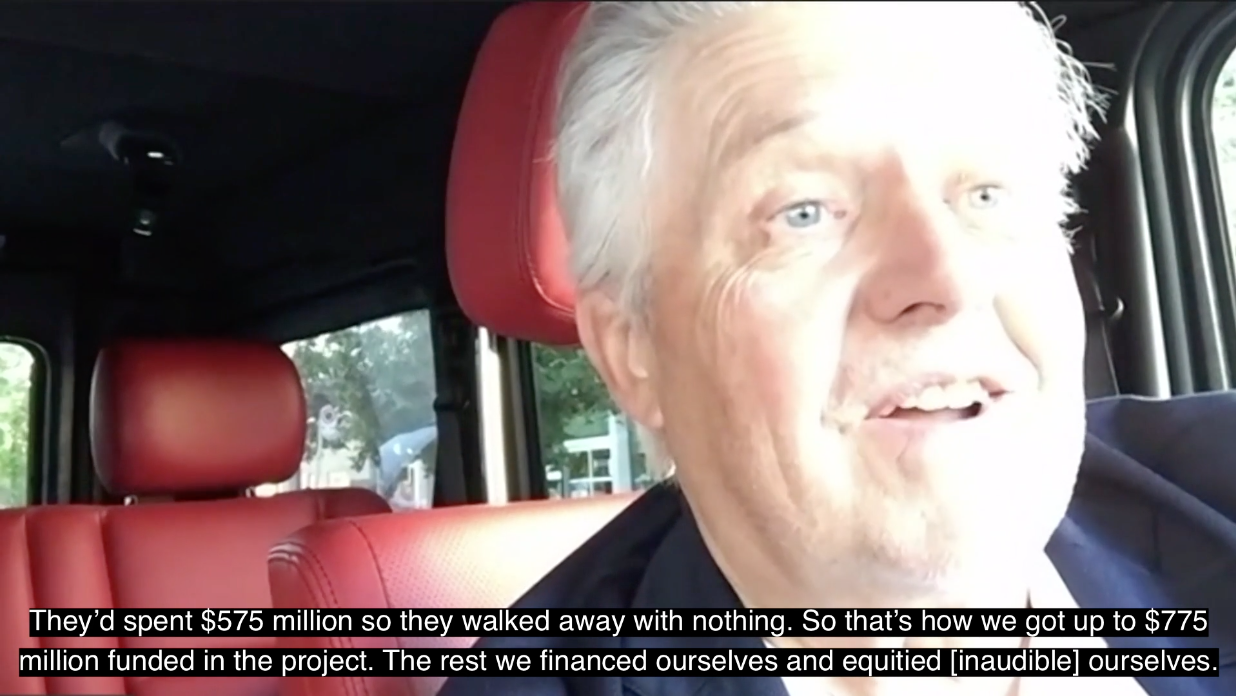The drop of the most recent two Pebble Tapes is a microcosm of corporate corruption laid plain for the public to see.
Naturally, the sales pitch is different, depending on what you're selling.To investors, Pebble and its parent company, Northern Dynasty, are selling a literal gold mine.
To Alaskans, they're selling a short-term job opportunity. Just don't look behind door number three — toxic byproduct that you'll own forever, long after the jobs are gone.
You would think selling a ticket to a gold mine would be the easy part. Yet, one thing we've seen repeatedly as we've watched the march toward Pebble Mine is that no one on either side of the sales pitch seems entirely convinced it's a good idea.
So far, the project has required a lot of investment.
"We've spent almost a billion dollars in total on the project today. And have built nothing," Thiessen says, quickly pivoting to explain how they've covered their nut.
A string of investors has abandoned the project, marking financial losses for at least two of them. Northern Dynasty CEO Ronald Thiessen tries to sell those losses as gains for Pebble in these new tapes, describing their abandonment in terms of investment in the project — sold with a wide smile.
"Rio [Tinto] invested $200 million in the company, and that's how part of the billion dollars that was spent," Thiessen says in Tape 14. "Anglo American came in as a 50-50 partner at asset level in 2007, funded $575 million worth of expenditures."
Thiessen does a slick job of selling these project abandonments as profitable to the investment phase. They walked away, but they left their money behind! What he doesn't note is that four major mining companies have come onboard and then jumped ship.
First Mitsubishi came in. It left in 2011, selling it's 9.1 percent investment in Northern Dynasty.
Then Anglo American walked away from a 50 percent interest in 2013.
In 2016, Rio Tinto gifted its 19.8 percent shares to Alaska-based charitable foundations — Alaska Community Foundation and the Bristol Bay Native Corporation Education Foundation.
Though Thiessen states on the tapes that Rio Tinto's shares were bought by a private company named Sterling Global.
Then in 2018, First Quantum walked from the project before investing. First Quantum was to provide $150 million for legal and consulting costs associated with the permitting process in exchange for an option on half of the Pebble Partnership.
Thiessen goes on to excuse Anglo American's desire to put the project into "care and maintenance" and subsequent exit as a result of the company's other losses.
"They said they simply couldn't [go through permitting] because they were bleeding too much money because of operations in South Africa and in particular in Brazil... so they had to walk away. And the deal that we had was they had to spend $1.5 billion to vest at 50 percent. They'd spent $575 million, so they walked away with nothing. So that's how we got up to $775 million funded in the project."
If I'm looking for a relationship of any kind, one of the first things I pay attention to is how that person or representative speaks of their past partners. If they suggest that they got away with something because the other person got cold feet, I don't take it as a good sign.
That's when I start asking more questions.
What Thiessen avoids saying is that with each investor coming onboard and then walking away, the reputation of the Pebble investment became riskier. And he only mentions two of the four investors that walked away from this deal.
What you don't want is to look like a long-shot investment.
"We spent over $150 million preparing for permitting," he says. "And then the permitting process itself we spent $100 million on. I would say that we probably spent more than three times as much as the average."
He deftly pivots to what he expects the state of Alaska to pitch in for infrastructure — $1.5 billion.
"The total [capital expenditure] on this in round numbers is going to be about 5.5 billion," Thiessen says on tape 14. "We believe the state of Alaska and other entities in Alaska will fund most of the infrastructure for about 1.5, so the net is $4 billion."
So that's the deal, folks. You help pay for it. You make it work. You clean it up. Is it worth it?
I hope the Bristol Bay region gets to have a real say in it.







